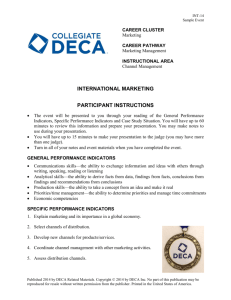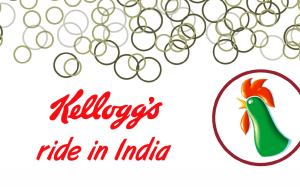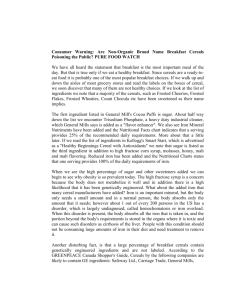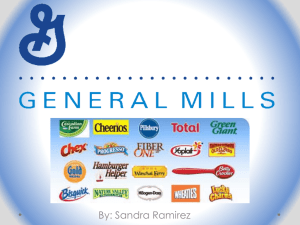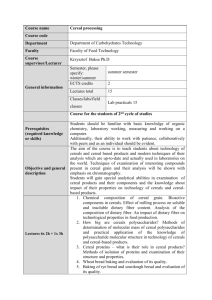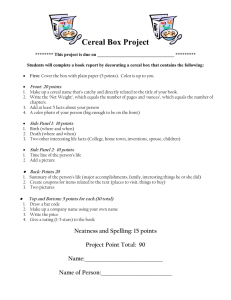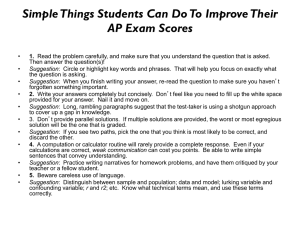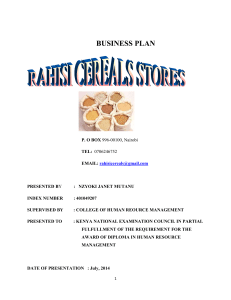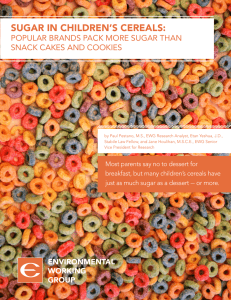File - Liane Cesare
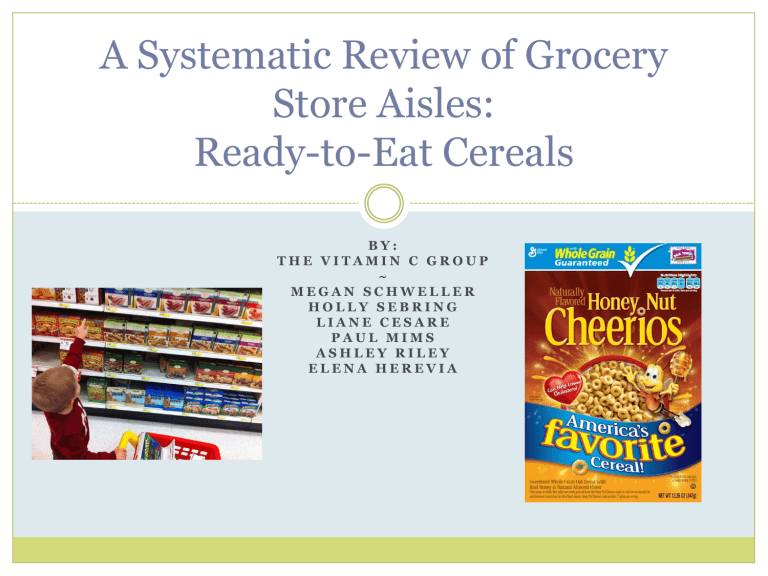
A Systematic Review of Grocery
Store Aisles:
Ready-to-Eat Cereals
B Y :
T H E V I T A M I N C G R O U P
~
M E G A N S C H W E L L E R
H O L L Y S E B R I N G
L I A N E C E S A R E
P A U L M I M S
A S H L E Y R I L E Y
E L E N A H E R E V I A
What is Advertising?
• The act or practice of calling public attention to one's product, service, need, etc., especially by paid announcements in newspapers and magazines, over radio or television, on billboards
Purpose of this Study
The purpose of this study was to review and analyze marketing strategies of ready to eat cereals as it relates to children and families and its impact on purchasing power in conjunction with nutrition
Why We Find This Study Important
Breakfast cereals make up the third most popular item bought at grocery stores, behind soda and milk.
Fourteen percent ($229 million) alone are spent on marketing breakfast cereals.
Children are the main focus of breakfast cereals because approximately half of the American children eat breakfast each day with cold cereal being the food of choice.
Study Design / Methods
Stores
Kroger
Aldi’s
Walmart
Dollar General
These stores were selected due to geographical location and perceived quality for price in regards to families with children
Study Design / Methods cont.
A systematic review of the following observational data:
Price
Placement
Size
Nutritional Claim
Fiber
Sugar
Iron
Calories
Study Design / Methods cont.
Materials used:
Checklist
IOS Based technology including; Apple IPhones and
Android platform smartphones
Cereal
Checklist / Results
Store
Aldi's
Cereal
Millville
Cinnamon
Squares
Price Placement Size
$1.89
Not placed with purpose
13 oz
Nutritional Claim
Serving
Size
Calories
"10 g of whole grains per serving"
3/4 cup 130
Fiber
1 g
Sugar
10 g
Iron
50%
Kroger
Captain
Crunch
Oops! All
Berries
$2.97
Children's eye level (3.5 ft off the ground)
11 oz
Colorful pictures only
1 cup 130 1 g 15 g 35%
Dollar
General
Froot Loops $2.50
Middle shelf 12.2 oz
"Good Source of
Fiber & Made with Whole Grain
1 cup 110 3 g 12 g 25%
Walmart
Lucky
Charms
$2.82
All Shelves 16 oz
"Good source of whole grains"
3/4 cup 110 2 g 10 g 25%
Discussion
Marketing/advertising is a science and evident in large chain stores like Kroger's and Walmart
Outliers are Aldi’s and Dollar General that lack a clear marketing scheme
Class question: Why do you think this is?
Discussion cont.
Marketing tactics most common were:
Placement on shelves
At eye level for children
Visual Appeal
Bright colors
Cartoon characters
Pricing
Consistent box sizes with similar pricing structure
Kids cereal is “cheap”
Discussion cont.
Nutritional analysis
Kid’s cereals may not be the best choice in terms of nutritional status (sugar/calories) but they’re also not the worst choice
Pros
Sources of whole grain
Good sources of Iron and Niacin
Cons
High amounts of sugar
False marketing
Takeaway Message
About one-third of packages on shelves are completely ignored, therefore it is important for retailers to highlight the items they want to sell.
They use techniques or strategies such as placement and design to attract consumers and customers.
The question is, are these products the best choices and do they have nutritional value or are they marketing gimmicks for profit
.
How this Relates to the RD
It is the Dietitian’s role to educate parents in order for them to instill healthful choices for their children
Healthy and happy parents= healthy and happy children
What Can We Do?
Counseling sessions
Education
Grocery store tours
“What really decides consumers to buy or not to buy is the content of your advertising, not its form.”
-David Ogilvy
References
*Can be found at the end of research papers
